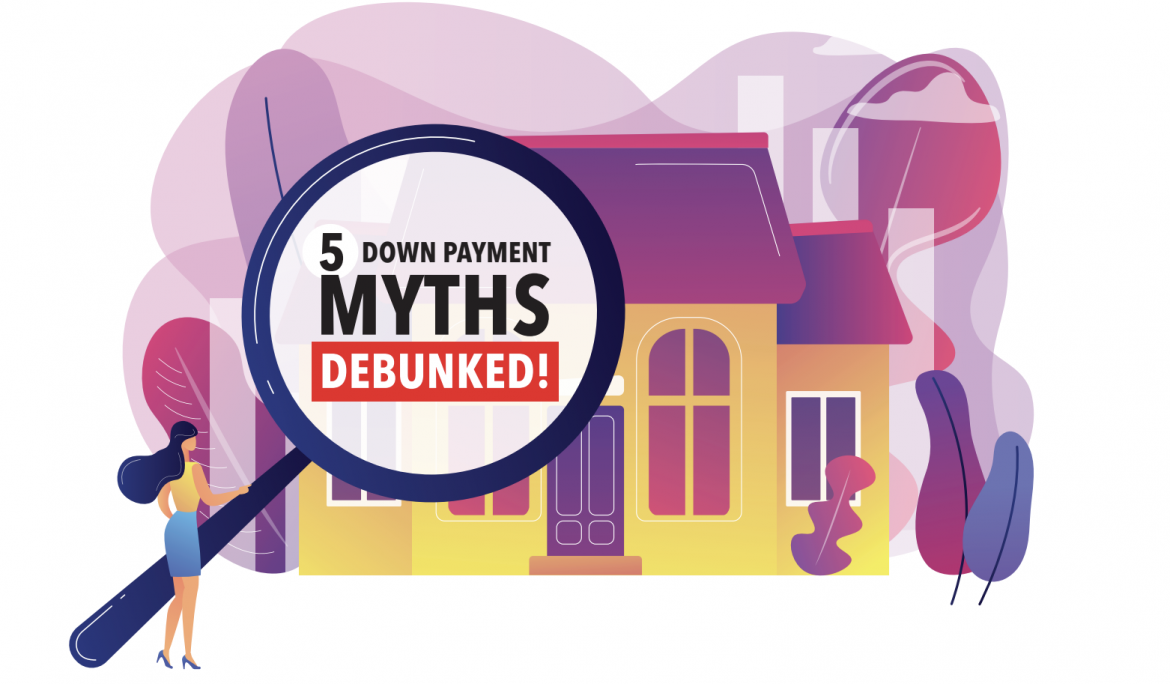
Our Holiday Tradition Changes Lives

Down Payment Resource, the nationwide database for homebuyer programs, released its Fourth Quarter 2019 Homeownership Program Index (HPI). The latest HPI data debunks five common down payment myths that may be keeping buyers on the sidelines longer than necessary.
Down Payment Resource (DPR) communicates with 1,165 program administrators to track and update the country’s wide range of homeownership programs, including down payment and closing cost programs, Mortgage Credit Certificates (MCCs), affordable first mortgages and more.
A 2019 TransUnion analysis found that the next three years are expected to produce more first time homebuyers than any point since the recession — at least 8.3 million. However, TransUnion’s October 2019 survey of non-homeowners reported only one-third of the respondents said they actually understood the home buying process, and only 1% of survey respondents said the home buying process was easy. In addition, one in three respondents (34%) said they were not familiar with any mortgage financing options, and two-thirds of respondents were not familiar with government-sponsored enterprises (GSEs) such as Fannie Mae and Freddie Mac.
“Today’s market is attracting Millennial and Gen Z first-time homebuyers. The housing industry can do more to educate the future of the market about their home financing options, especially down payment assistance,” said Rob Chrane, CEO of Down Payment Resource. “Our new Homeownership Program Index reports a growing number of incentive programs designed for educators, police officers, firefighters and healthcare workers. More markets are looking at affordable housing strategies to attract and retain important services.”
TransUnion’s survey found that 41% believe a high down payment is required to purchase a home. In fact, there are many low down payment loans and programs available. New data shows that a lower down payment may even be better for many new buyers, as it provides a valuable cash cushion. Research by the JPMorgan Chase Institute found that liquidity — having at least three months of mortgage payments available — is a better measure of homeownership success than a large down payment. There are a wide range of homeownership programs that can help with the down payment and closing costs.
The HPI reports an increase in the share of down payment and closing cost assistance programs:
The industry often associates homeownership programs with first-time homebuyers, but eligibility is actually broader. The official definition of a first-time homebuyer — according to HUD — is someone who has not owned a home in three years. In addition, the HPI reports that 41% of homeownership programs do not have a first-time homebuyer requirement and are available for eligible repeat homebuyers.
Down payment programs are available in every market across the country. The HPI reports 70% of programs are available in a specific local area, such as a city, county or neighborhood and nearly 30% of programs are available state-wide through state housing finance agencies — a 2% increase from the previous HPI. States with the greatest number of down payment programs remained consistent —California, Florida and Texas are the top three.
View a complete list of state-by-state program data.
Down payment help is available in every market, including high cost areas. The HPI reports that 11% of programs offer incentives and even specific programs for community service workers, including educators, police officers, firefighters and healthcare workers — a 3% increase from the previous HPI.
Plus, more than 6% (6.3%) of programs have benefits for veterans, members of the military and surviving spouses. These programs can also be layered with zero down payment VA loans.
One-to-four unit multi-family properties can also qualify for down payment help. Twenty-five percent of programs allow buyers to purchase a multi-family property as long as the buyer occupies one of the units, which allows the homeowner to earn income from their rental units to help pay the mortgage.
There are 2,451 homeownership programs available and 83% currently have funds available to eligible homebuyers. Exploring home financing options should be the first step for prospective buyers, however, they don’t have to go it alone — housing agencies, program administrators and participating lenders can provide expert guidance.
Homebuyers can get a jump start by completing the homeownership education course typically required to qualify for a program. This education gives buyers confidence with the home buying process, financing options and budgeting. Homebuyers should refer to the specific requirements and education providers as specified by the program.
After a homebuyer is approved for a program, the agency will provide documentation that can be submitted with an offer. Sellers can also benefit because the down payment program may help cover closing costs.
Joe Mellman, senior vice president and mortgage business leader at TransUnion, highlights the opportunity for lenders to connect buyers to available programs: “Many of our potential first-time homebuyer respondents don’t seem to be aware of the wide variety of financing options available to them. It suggests there’s a large opportunity for lenders to proactively identify consumers who are interested in becoming first-time homebuyers and then educating them on options they may not be aware of. Consumers may find home ownership programs that are more flexible than they originally thought, and lenders in turn can gain new customers.”
Download the infographic and complete Q4 2019 HPI press release.
Never want to miss a post? For more useful down payment and home buying information, subscribe to our mailing list.
